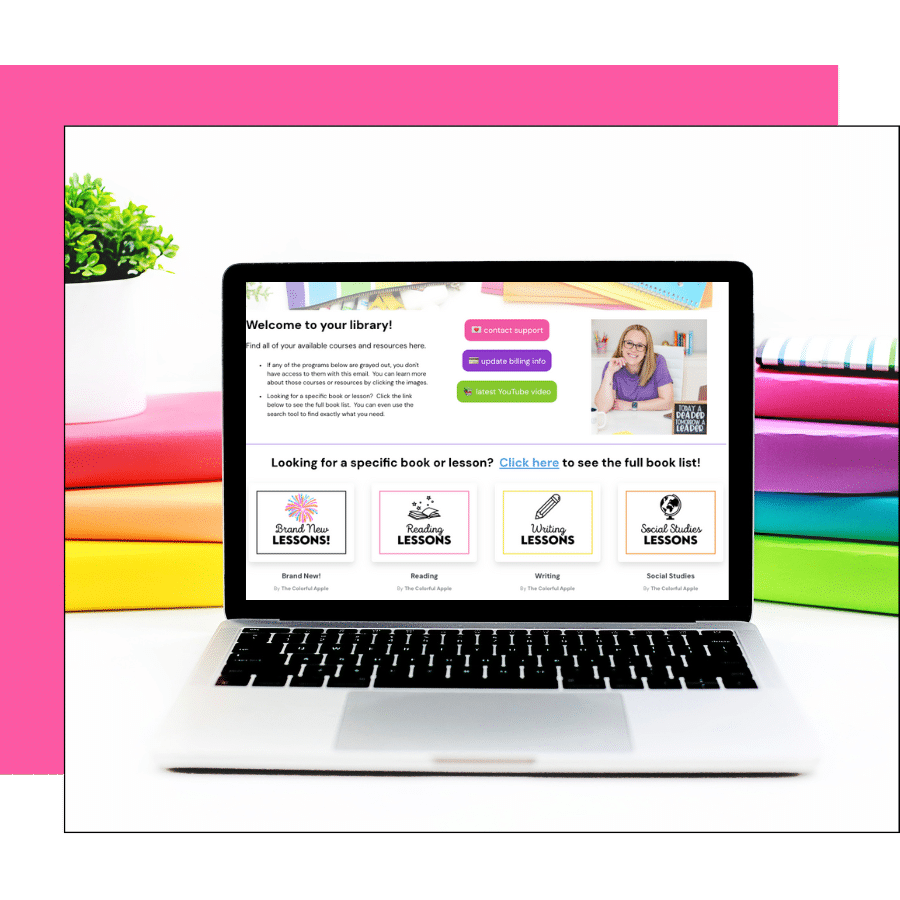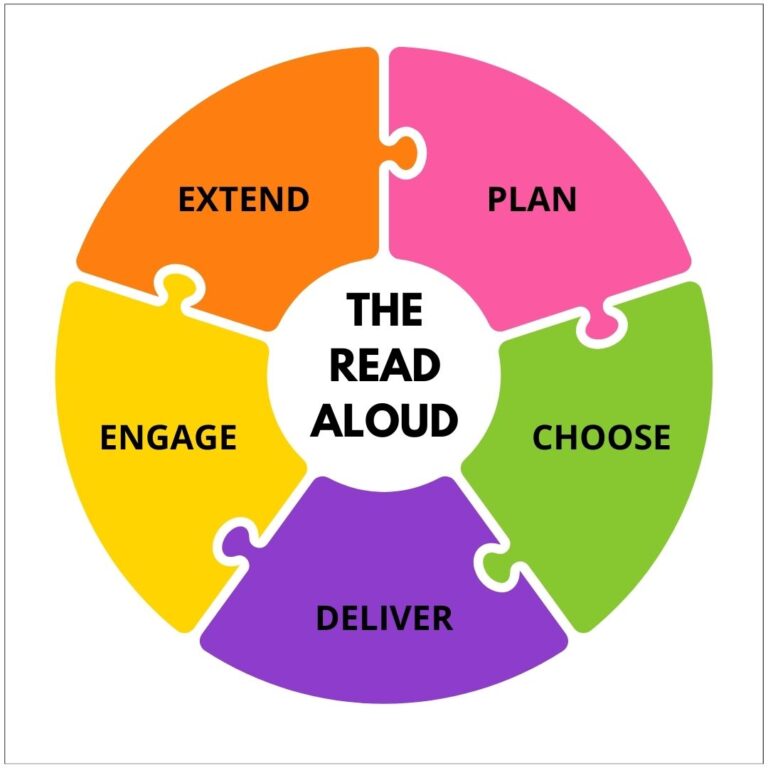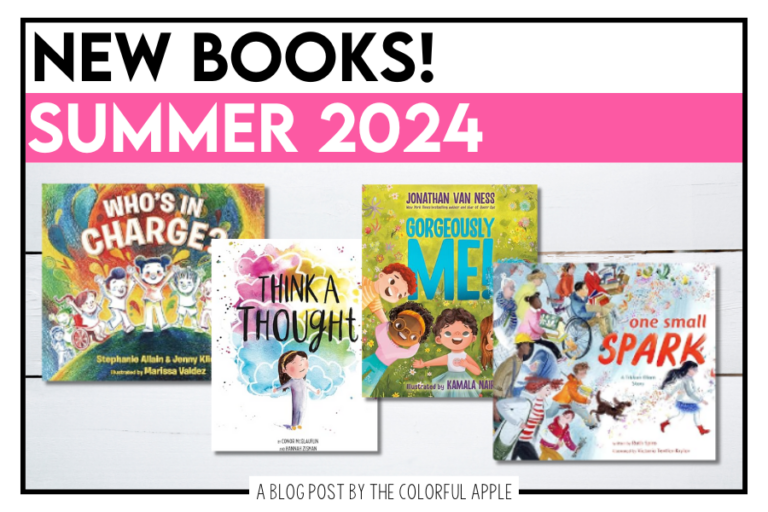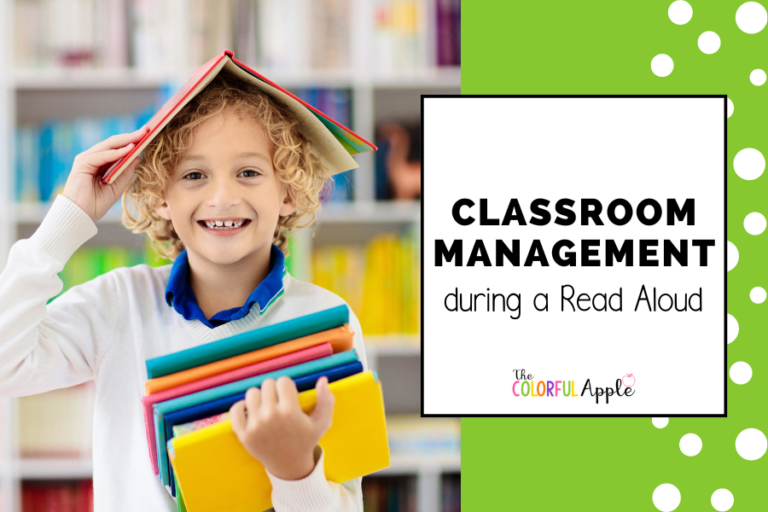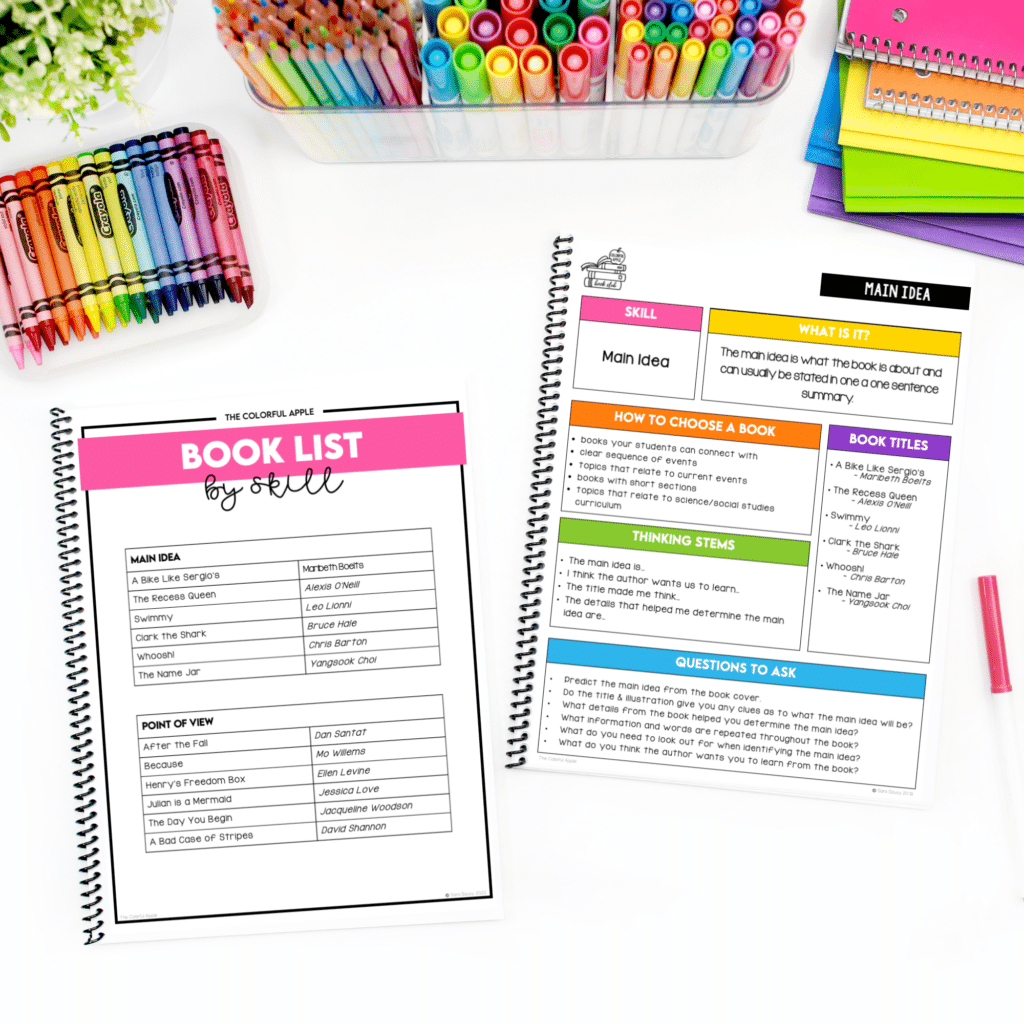
One way to engage students during a read aloud is by asking questions. Creating meaningful questions can be a challenge, however. How we ask questions that help students’ understanding of the book, without interrupting the flow of the story?
I’m sharing these tips on video as well! Check out the Interactive Read Aloud Questions video on my YouTube channel:
As you read the book aloud to yourself first, think about where you naturally pause to think. These will be your stopping points!
Be sure to not overdo it. It can be easy to want to ask ALL the questions. But if we ask too many, students will lose interest. Also we don’t want to take up too much time.
Types of Read Aloud Questions
Here are the types of questions that can be asked during an interactive read aloud.
Factual
A factual question prompts students to recall specific information about the book. Who are the characters? Where does the story take place?
Inferential
Inferential questions ask students to “read between the lines.” What do you think the character feels that way?
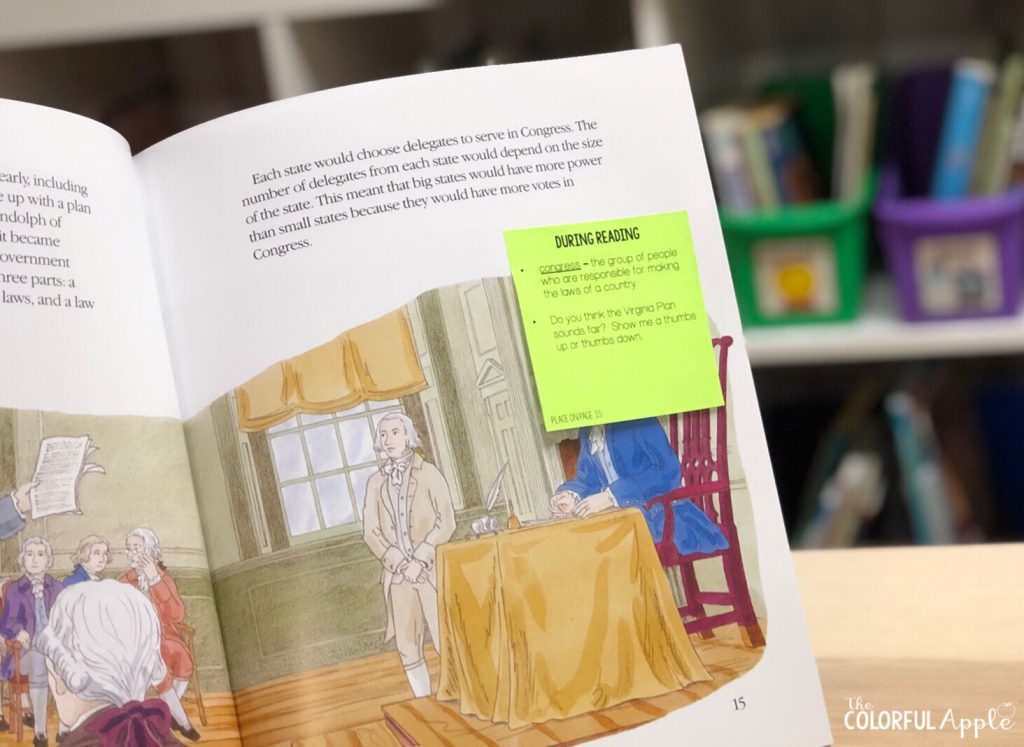
Opinion
Giving students the opportunity to share what they think will help them connect with the characters in the book. What do you think about what the character just did?
Connection
We build a connection between the students and the book when we ask them to think about their own experiences or books they have read. Has that ever happened to you? Does this make you think of another story?
Vocabulary
An interactive read aloud is often at a higher reading level, so vocabulary can be more challenging. This provides an opportunity to help students figure out a word they don’t know. Ask students what they know about a word. What do you think this word means?
Responsiveness
Oftentimes, we use a direct approach to questions during a read aloud. We ask only factual questions and expect students to give us the “right” answer. Instead, we should be using a responsive approach.
With a responsive approach, encourage students to say more and to figure out ideas with our guidance. Respond to a student’s comment or question in order to encourage more elaboration and guide their thinking. By using what the students say, we are able to help them make deeper connections and provide more complex thinking.
Benefits of Responsiveness
Students are more likely to respond on topic and imitate the language we use when it’s based upon what they have said. It helps reduce the amount of information in a teacher’s sentence that they have to process – teacher is using some of the words that the student used. Students are more willing to participate verbally.
Want to have interactive read-alouds done for you every month? Come join us in the Colorful Apple Book Club!

Save these ideas for later – just pin the image below!


